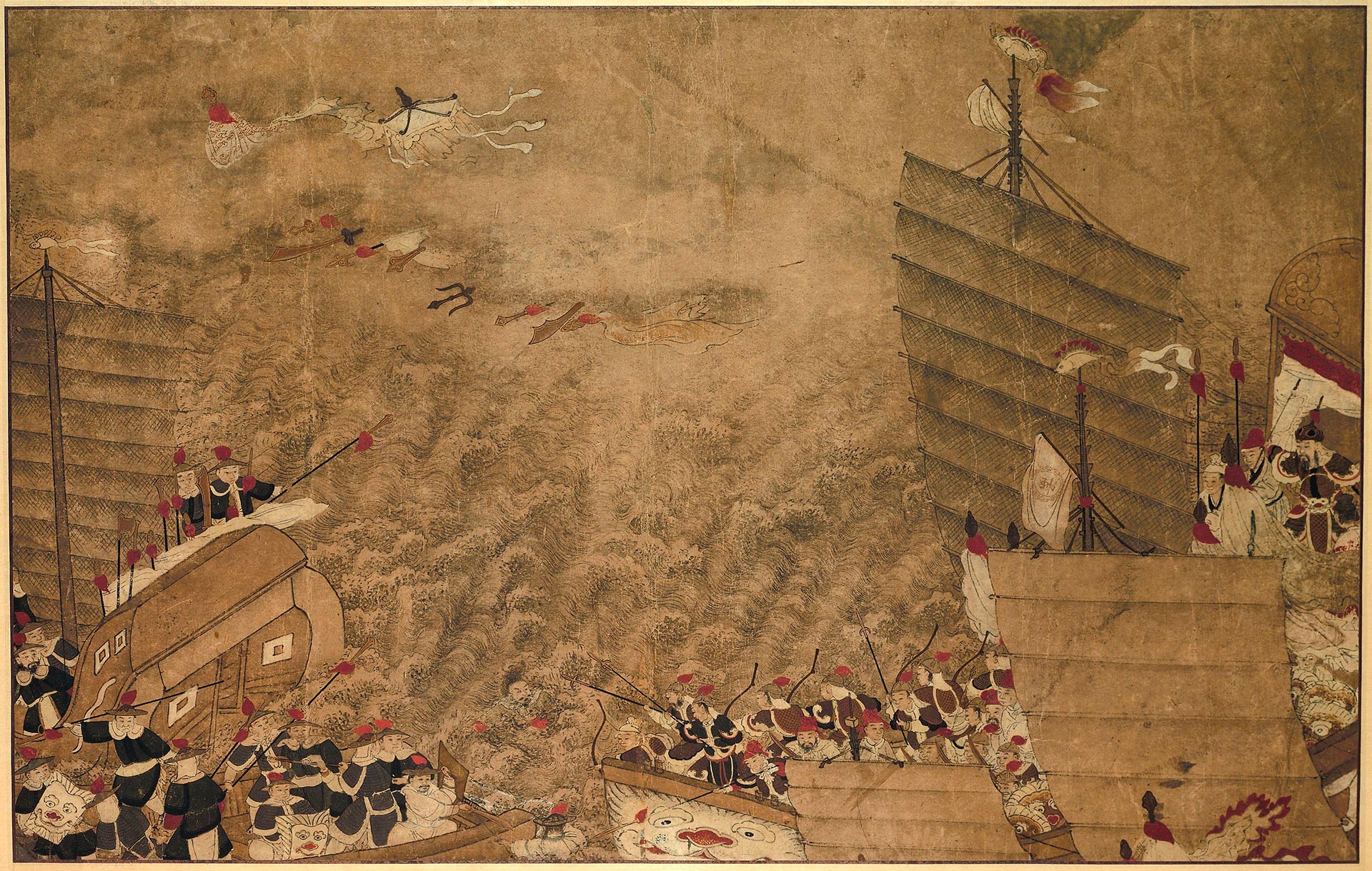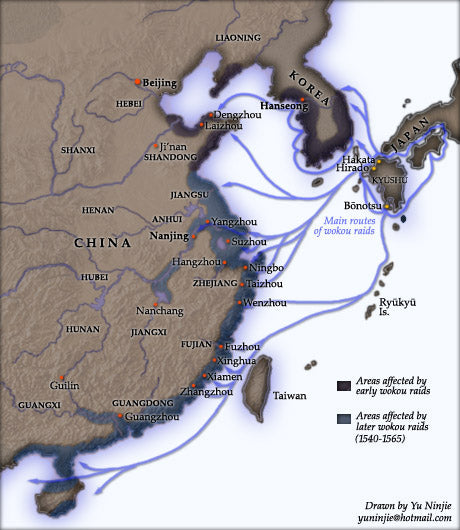The term wakō refers to Japanese pirates, but also to a lesser extent: Chinese, Korean and Portuguese. They reigned terror on the seas of Asia between the 13th century and the 17th century by pillaging merchant ships and capturing innocent people to make them slaves. For a very long time they inspired fear and tarnished Japan's reputation towards other countries. Today we invite you to delve into the heart of their history.
The origin of wakō
The first mention in history of the term wakō dates back to 414 AD. This is an inscription carried on a stele ( Kwanggaet'o stele ) in homage to King Gwangaeto of the Goguryeo kingdom. It was found in southern Manchuria in 1876 after the country was opened to colonization.
However, it was not until the 8th century that the first real pillaging by Japanese pirates was recorded. The first wakō were born. The main Asian powers of the time did not yet suspect it, but a great wave of piracy was about to hit the seas for several centuries.
Who are the wakō?
The identity of the wakō still remains quite vague today. Most of them are fishermen dissatisfied with the political regime in place who are no longer able to feed themselves and who decide to take up arms to steal and pillage merchant ships. Or worse, taking people hostage to sell them as slaves to Japanese lords or Portuguese slave traders.

image source: Wikipedia
Many of them are merchants themselves and some even manage to obtain official documents proving the legitimacy of their commercial activity, a sort of license in a way. This is why it is still difficult today to identify exactly who was hiding behind the pirates of the Asian seas. They did not in fact have pirate flags like we often see when we talk about pirates in the West.
The golden age of piracy
The Mongol invasions of 1231 and 1259 damaged Japanese maritime trade. This allowed the wakō to develop and settle in the islands of Tsushima in particular, but also Matsura and Iki.
Their ranks continued to grow during the 13th and 14th centuries and it was during this period that they caused the most damage. This mainly involved pillaging merchant ships en route to China, but also invasions on the coasts to pillage farmers who were located near the seas.
Wako raids:

image source: Wikipedia
All this looting encouraged the Korean and Chinese governments to respond and both sent many soldiers to sea to hunt them. But also directly within their HQ on the islands mentioned above.
Unfortunately, Japan's authority does not yet extend far enough into these islands to the south of the archipelago for it to regulate wakō, which continues to exasperate the Korean and Chinese governments in particular.
The end of wakō
It was not until the unification of central Japan at the very end of the 16th century that a military power was solid enough to definitively eradicate the wakō. It was Toyotomi Hideyoshi, Japanese warlord, who took charge of resolving this mission and who achieved it with the help of his numerous soldiers.

